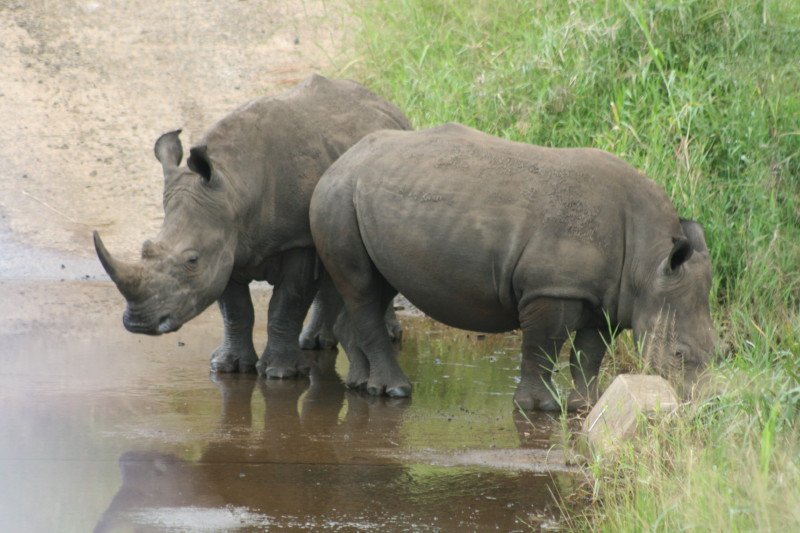Ezemvelo Nature Reserve 0
It’s a wonderfully counter-intuitive part of nature that fields that have been ravaged by fire are often vibrant oases of life … and my visit to Ezemvelo Nature Reserve once again proved this.
The reserve, situated 74km due east of Pretoria, just past Bronkhorstspruit, had obviously done their winter burning quite recently and stretching far to the right as you drive into Ezemvelo were burnt fields full of wildlife … and some interesting birds.
Without the new grass springing up, and the burnt seeds and carrion now exposed, I’ve no doubt that the area would have just looked like the old farmland around the reserve. But my eyes were inexporably drawn and kept busy by the cavalcade of life on the right, while the only thing of interest on the other, unburnt side of the road, was a treed ridge which didn’t hold anything.
Lovely Capped Wheatears were darting about the burnt fields like livewire sentinels, while the lack of trees didn’t bother the Fiscal Shrikes, who were using both high and low perches to hunt in areas where the visibility of their prey had greatly improved. The Forktailed Drongos were able to use telephone poles in the absence of trees.
Two Blackbacked Jackals were plodding along in mischievous fashion, obviously on the lookout for any bits of “braaied meat” left behind.
A stately Kudu emerged from some trees close to the road and there were no fewer than nine species of antelope present, as well as many Warthog (especially near the Wilge and Sterkfontein rivers), a Vervet Monkey, Plains Zebra and a Yellow Mongoose.
The overall colour was still the usual drab yellowish-grey of the Highveld winter, and some pink rondavels did break up the monotony, but the colour really wasn’t to my liking!
Fortunately, there was a wonderful splash of colour amongst all these muted tones with a Whitefronted Bee-Eater swooping into view.
The thicker grass down by the Wilge River produced a Spikeheeled Lark and a herd of Eland on the hillside above, while some female and young Waterbuck tried to hide themselves as well.
Then it was time to ascend back up the hill and through the old regenerating farmlands – now there were burnt fields on both sides of the road …
I was enjoying the whirring white wings of the Anteating Chats when there, right next to the road, appeared the cute little Coqui Francolin male with his orange head and striped belly. I’ve only seem them before in the Kruger National Park, maybe once or twice, so it was a marvellous, lengthy sighting.
Longbilled Pipit and a rambunctious Eastern Clapper Lark striding about were other good sightings before I departed.
Sightings list
Crowned Plover
Capped Wheatear
Common Ostrich
Blesbok
Springbok
Blue Wildebeest
Fiscal Shrike
Forktailed Drongo
Blackbacked Jackal
Kudu
Red Hartebeest
Warthog
Vervet Monkey
African Stonechat
Blackeyed Bulbul
Rock Pigeon
Reed Cormorant
Helmeted Guineafowl
Black Wildebeest
Blackchested Prinia
Egyptian Goose
Cape Turtle Dove
Eland
Spikeheeled Lark
Southern Black Flycatcher
Waterbuck
Redeyed Dove
Cape Wagtail
Giant Kingfisher
Pied Crow
Plains Zebra
Fantailed Cisticola
Orangethroated Longclaw
Longtailed Widow
Gemsbok
Anteating Chat
Southern Masked Weaver
Arrowmarked Babbler
Whitefronted Bee-Eater
Brownhooded Kingfisher
Longbilled Pipit
Yellow Mongoose
Coqui Francolin
Rock Martin
Laughing Dove
Grassveld Pipit
Eastern Clapper Lark
Blacksmith Plover



